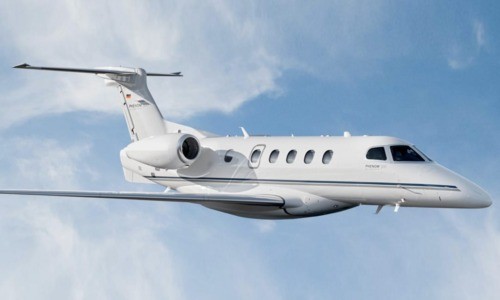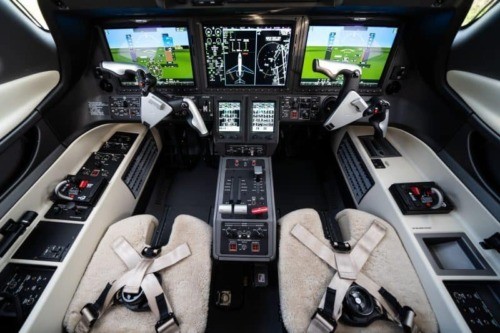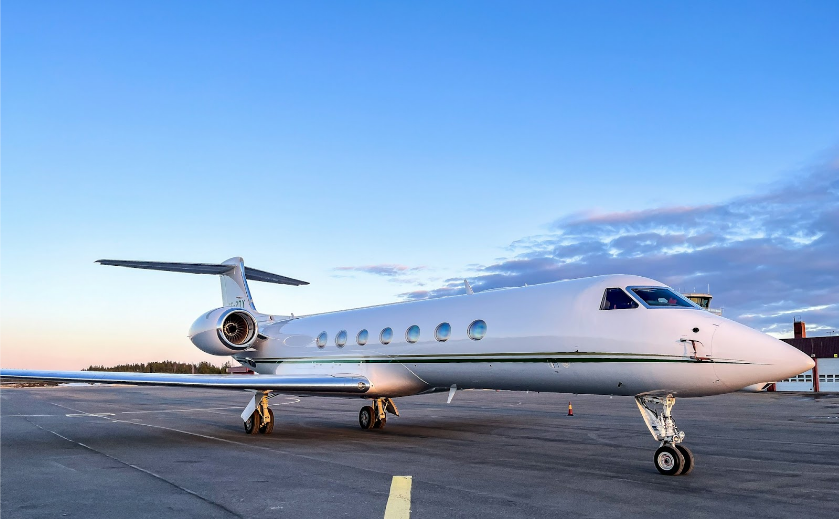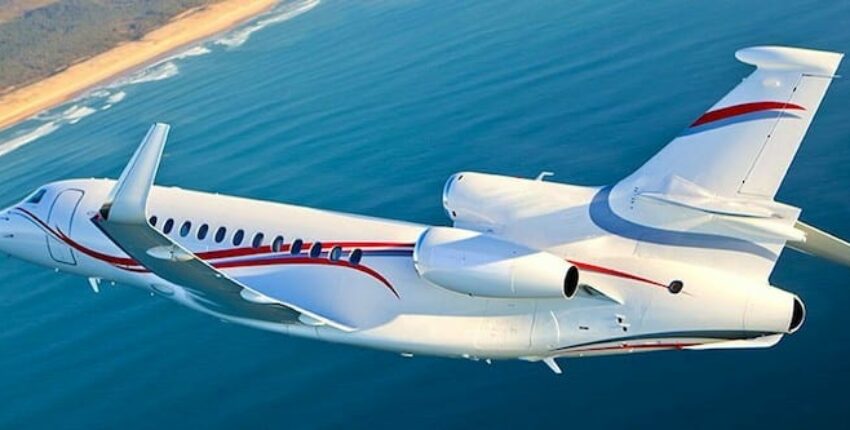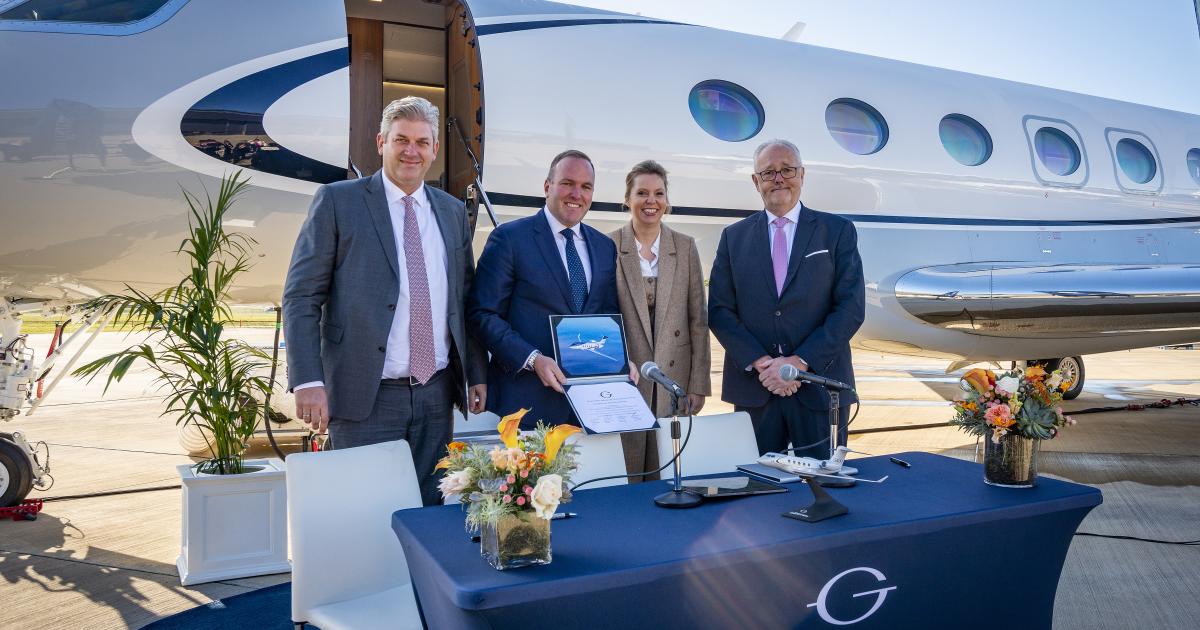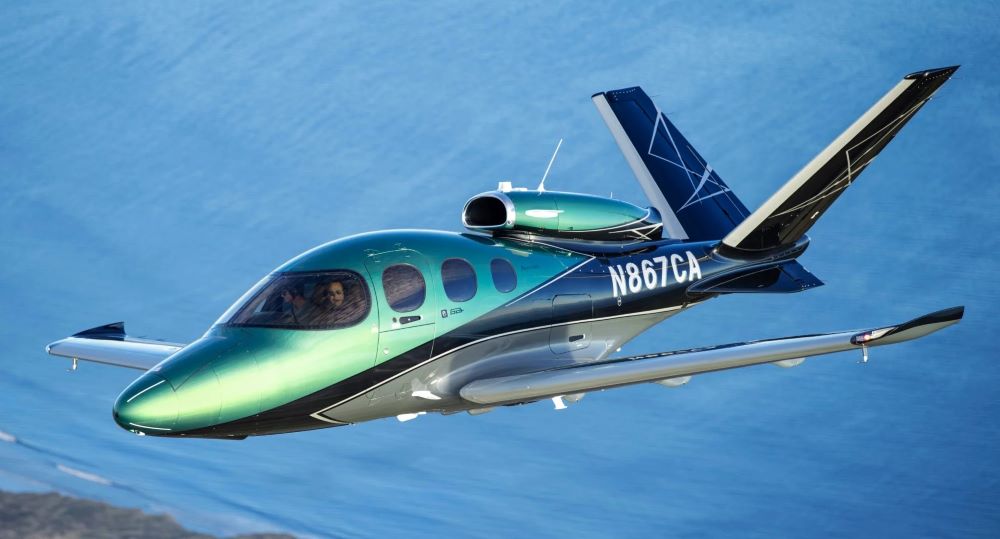All You Need To Know About the Embraer Phenom 300 – Review, Specs & Flight Test
8 min read
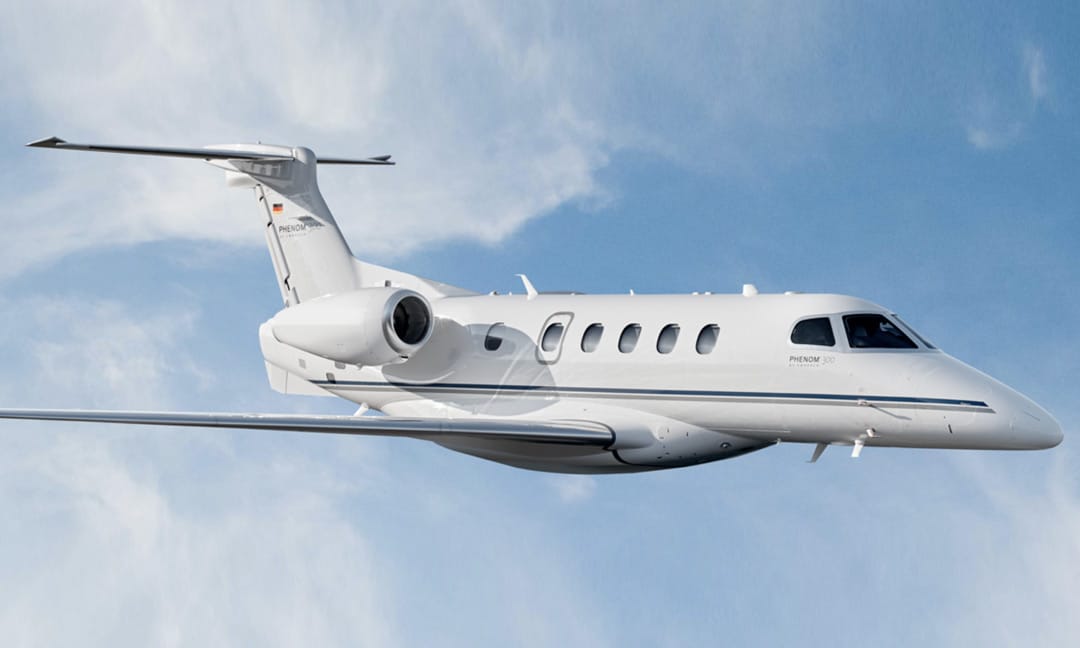
One such aircraft that has made a significant difference since hitting the market slightly more than a decade ago is Embraer's Phenom 300.
This hugely popular light jet has set a new standard in its category. The aircraft has quickly found favor with global private owners and charter operators alike, thanks to its unbeatable trifecta of performance, cabin comfort, and operational economics.
In this ultimate review, we will dive in and see what makes the Embraer Phenom 300 such a phenomenal aircraft.
If you're a fan of aviation, own an airplane, or are looking to purchase one, keep reading!
A Brief History of the Phenom 300
First, let us flashback to how the Embraer Phenom 300 was developed.
Embraer itself is an established provider of commercial jets and turboprops. Yet, the company first entered the business aviation market in 2000.
Though the company was enjoying early success with the Legacy 600 and Legacy 650 models, it came to realize that light jets were not just a fad, but rather a new opportunity.
This development would eventually lead towards the very light jet known now as the Phenom 100. Embraer then announced plans for an even larger version, the Phenom 300.
First flying in April 2008, the Phenom 300 was delivered in early 2009. It achieved its complete certification by aviation authorities in Brazil, the US, and Europe within two years. Delivery of the first one occurred in December 2009.
Despite being on the market for more than a decade, Embraer has invested in continual updates to the Phenom 300. In 2017, an improved “E” variant was launched as E-ISV with standard avionics and upgraded interior options. It is among the highest selling light jets in the world with more than 600 airframes delivered through 2021.
Design Specifications
The Phenom 300 is the balanced approach, performance and comfort in a smartly crafted package. Here are a few of the notable specs that help it earn its stripes as a light jet:
Dimensions and Capacity
- Length: 51 ft 4 in (15.65 m)
- Wingspan: 52 ft 2 in (15.9 m)
- Height: 16 ft 9 in (5.1 m)
- Cabin Length: 17 ft 2 in (5.2 m)
- Cabin Height: 4 ft 11 in (1.5 m)
- Cabin Width: 6 ft (1.83 m)
- Maximum Takeoff Weight: 18,300 lb (8,301 kg)
- Maximum Landing Weight: 16,059 lb (7,278 kg)
- Fuel Capacity: 3,339 lb (1,514 kg)
- Seating Capacity: Up to 11 passengers
Performance
- Max Cruise Speed: 453 knots (878 km/h)
- Max Range: 2,010 nm (3,724 km)
- Service Ceiling: 45,000 ft (13,716 m)
- Rate of Climb: 4,000 ft/min (20.3 m/s)
Powerplant
- Engines: 2 Pratt & Whitney Canada PW535E turbofans
- Thrust: 3,360 lbf (14.9 kN) each
The Phenom 300 has been a massive success with pilots and passengers, and these outstanding abilities well-contained within an extremely efficient airframe help explain why. Moving on, let us now get inside the cabin.
An Oasis at 45,000 Feet
The Phenom 300 was more than just a numbers game, it was designed for comfort. When you're flying high above the earth, it provides a nice welcoming oasis in its roomy and well-appointed cabin.
A unique-to-the-VW flat floor design brings over 17 feet of cabin interior-and plenty of legroom. Even the tallest of guests can navigate their way around with space to spare, with a height of 4ft 11in.
Six large oval windows throw natural light into the environment. The lighting system can also be modified in various phases according to the time of day.
Seating and Sleeping Seating capacity of up to 11 passengers with multiple customizable configurations. The seats can transform into beds for those overnight flights. The number of people that can sleep extremely comfortably, even in the standard eight-passenger configuration is upto six.
Comfortable for longer journeys, plush leather seating and smart ergonomic designs. Available forward side-faced seating delivers passenger meetings and collaboration in person.
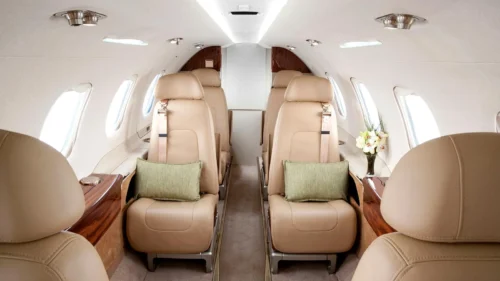
Entertainment and Connectivity Passengers can stay entertained and connected via the available Wi-Fi system and cabin entertainment items. The aircraft has ports all over for your mobile device(s) to charge.
Galley and Lavatory The aft galley includes plenty of storage, an espresso maker and a convection oven. Always hot and cold drinks ready.
The lavatory is fully enclosed, private and spacious, with a window as well as a vanity.
Baggage Capacity It has a heated baggage compartment that carries 1,487 pounds (675 kg) of luggage and gear. 84 cubic feet of space is plenty of room for everything from golf clubs to skis and other large items.
Personalization There are vast selection of interior finishes and options available to owners. So whether it is floor mats, leather or wood veneers, everything can be customized for a unique ambiance.
Built for the Pilot
Pilots, naturally, have not been neglected in the Phenom 300's design. The clean cockpit offers advanced avionics suite tailored toward a simplified workload management.
The Garmin G3000 system is an intuitive package featuring three large, high-resolution displays. A few taps of the screen and boom - your critical flight data is available. Routing, of course, is straightforward with graphical pages for flight planning.
They do the heavy lifting with automation. Maintain optimum speeds at climbing, cruising and descending while trimming the aircraft are managed by the digital flight control system. When paired with the Prodigy autopilot (also available on those platforms), reducing workload improves situational awareness.
Against this backdrop, the cockpit boasts a small mountain of glass and a generous 25° view upwards. This is going to appeal to pilots who want eyes on their surrounds! There is generous legroom in the cockpit and enough storage space for personal items.
Safety First
When it comes to aviation, the number one priority for pretty much anyone should be safety. This thought went into the design of Embraer's Phenom 300.
Highlights of safety features:
- Completely redundant Honeywell Primus Apex advanced avionics suite
- Revolutionary navigation redundancy using two inertial reference systems
- Traffic Collision and Avoidance System (TCAS II) and TERRA- ETAWS
- Turbulence detection capability weather radar
- Automatic take-off and landing dual serial autopilots
- Shortened landing distances by using carbon brakes
- An airframe tolerant to damage for extreme g-force survivability
These high-performance turbofan engines allow the aircraft to operate from shorter runways. On-board maintenance diagnostics also ensure the highest level of reliability.
Efficient Operations
Of course, if you're a private owner or charter operator, operational costs weigh heavily in your choice of aircraft. Due to the increased cost of fuel and labor prices, no single factor has more significance than efficiency.
Now, let us take a look at some of the major things that should be thought about from an operational cost perspective regarding the Phenom 300.
Fuel Efficiency The Phenom 300 consumes around 200 gallons of fuel per hour during high-speed cruise.
Even in comparison to other light jets, it uses relatively little fuel for its speed and cabin volume. Witty design touches such as a flex-fuel option mean it can run on regular petrol or cheaper alternative fuels.
Maintenance Maintenance reserve costs range from $55 to $85 per flight hour, depending on use. With this program, you will benefit from fixed-cost coverage that is predictable; it is designed for engine maintenance. Airframe inspections like 150-hour checks can be accomplished quickly to allow for minimal downtime.
In short, operators say dispatch reliability is high and maintenance is easy to accomplish with the Phenom 300. This makes for more availability to fly and generate revenue.
Direct Operating Costs Its estimated direct operating costs are about $1,800 per flight hour. That's roughly $900,000 annually for a 500 hour/year operator. Although it is not the most fuel-efficient aircraft in its class, the Phenom 300's excellent overall efficiency mitigates much of the high direct acquisition cost.
Pilot Training With automation and cockpit layout that makes sense, it eases the pilot transition training requirements. Numerous pilots have noted they achieve proficiency in fewer number of flight hours compared to other models. This doesn’t fall under the same umbrella of using the installation and save a lot of time and training costs.
Resale Value The increased residual values over some competitors is partly due to strong ongoing demand for the Phenom 300. Compared to most other OEMs, Embraer's sales of pre-owned aircraft as a ratio versus new deliveries is much higher.
Owning and Operating the Phenom 300
Purchase Price Set up with standard configurations, the Phenom 300 runs about $9-$10 million. That price is pretty much where you'd expect for a brand-new light jet offering range and speed.
Pre-Owned Market Considering Embraer's stellar brand reputation and resale values of its products, going for a used Phenom 300 is an opportunity not to be missed. Prices are on the order of $5 to $7 million for example, just what that amount could purchase a well-exercised, but late property plane.
Operating Costs By hour, operators are looking at around $1,000 for fuel, $300 for maintenance and another $500 for other costs like crew, catering and fees. Final Hourly Price will depend on factors such as Fuel cost, flight time, and the usage of the device.
Ownership Options With low operating costs, the Phenom 300 can fit in a variety of ownership structures:
- Private owner flying 100-200 hours per year
- Fractional shared ownership with buy-in around $2 million
- Charter fleet with the jet on semi-managed program
Whatever the ownership structure, the Phenom 300 delivers great experience.
Final Thoughts
Over the course since its first flight, the Embraer Phenom 300 has made itself as one of the most successful light jets ever made. And though it has more than 600 delivered, there's no sign of the momentum slowing down.
The Phenom 300 has set the standard in its class for many savy business and leisure travelers. A combination of speed, range, cabin comfort, and comprehensive avionics - as well as good efficiency - makes for an enticing ownership ladder.
The Phenom 300 still offers the best performance in the key metrics, although newcomers such as the Citation CJ4 or HondaJet Elite provide some tough competition. But for pilots who prize its silky flying manners and intelligent packaging, the pleasure of command is even greater.
